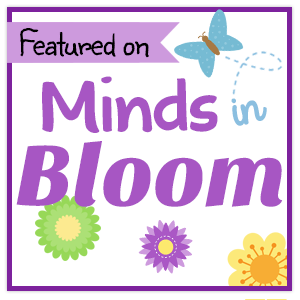I wanted to be a teacher as long as I can remember, even before I actually attended school. I will admit though to several side journeys as I grew. My uncle campaigned pretty hard throughout my high school and college years to study law and join his firm. Once his own children were exploring their own future careers, he stepped back. Two of his three children actually did become lawyers, and I was free once again to continue moving toward my dream of working in my own classroom.
In college, I became extremely interested in sociology and archeology, and briefly considered a career as an archeologist. Dirty fingernails along with a dislike for working outside in extremes of weather told me that this was not a good choice for me. I believe that my intense interest in these fields of study helped me overall to be a better teacher. I never had to pretend to be excited about digging into the study of a new piece of nonfiction. I was all in from the beginning, and sometimes needed to calm down a little before presenting the lesson to my students!
I came across an article recently that detailed the discovery of Harriet Tubman's childhood home in Dorchester County, Maryland. The area is becoming swampier as the water level rises and the land is sinking, but when the manager of The National Blackwater Wildlife Refuge learned that Ben Ross' (Harriet Tubman's father) cabin may have been on their newly acquired land, she called in the archeologists! Their first find was a coin from 1808, the year that Harriet Tubman's parents were married. After digging over a thousand pits, the team discovered many datable artifacts, such as "...bricks, 19th century pottery with distinct design patterns, rusty nails, a button, and old documents". Historical records tell us that Harriet Tubman lived in this cabin as a child, and again as she planned her strategy of the Underground Railroad in 1849. While not finding an actual homestead or even a chimney, this find was exciting, and pulled me back to a longtime favorite book of mine.
Teaching Home Place by Crescent Dragonwagon (IKR? Her real name!) was always one of those "calm down first" moments for me. I love this author and the gentle and tender way she lets her story unfurl. Also majorly in love with the illustrations of Jerry Pinkney. A special book to treasure on several levels. Past and present melt into each other as watercolors do when you are working wet on wet and colors begin to merge. A family on a hike through the woods (how many times have we all done this as a family outing during the past year?) finds daffodils growing in the wild, but no house nearby. They search further and find part of a chimney standing by itself. A little digging in the ground unearths a blue glass marble, a nail, part of a china plate, a horseshoe, a small yellow bottle, and a doll's arm. These artifacts help them to tell each other the story of a long ago family living right in the spot where they stood, having chicken for dinner, singing on the front porch, and even complaining about the heat on a summer day long before central air! If I had my hands on this book as a child, I might have veered off onto the archeology path despite the dirt and heat! Don't miss sharing this one with your kids!
Teaching Narrative Nonfiction is really much more intuitive than many of us think when we first approach it. Which type of writing is a nonfiction narrative? It is simply nonfiction delivered in narrative structure rather than expository. It is all true, but told as a story unfolds. Crescent Dragonwagon tells the story of a house and family as they lived circa 1900. It's recommended for grades K-3, but I used it with grades 4 and 5 for years. Fourth and fifth graders are much more likely to be able to use it as a mentor text for writing more narrative nonfiction.
A favorite followup writing activity to Home Place would be to bring a photo of an artifact from home, or an artifact discovered on a walk, and tell the story of a person or family who might have used that item in another time in history. Without using artifacts, you could also look at a particular time in history and have your fourth or fifth graders tell about that time from the viewpoint of a kid their age at that time. (I would steer clear of using this idea to study slavery or other culturally sensitive issues.)
If you use The One and Only Ivan in your reading curriculum, there is a narrative nonfiction companion book called Ivan, the Remarkable True Story of the Shopping Mall Gorilla, also by Katharine Applegate. It would be very interesting to discuss the narrative structure of each.
As a reading addict, I always had a book or two up my sleeve that I was reading to tell my students about as we discussed their books. I usually did not tell them the title. No need for them to read an adult book that may not be suitable in other ways, but only to show that authors who write for all ages use many of the same structures, elements, and storytelling techniques. The story of Home Place takes me back to a recently read book, The Lost Apothecary by Sarah Penner. A tourist in London goes "mudlarking" and finds a mysterious blue bottle on the shore of the Thames. We then embark on parallel stories of the tourist trying to trace the history of the bottle and a history told of a time when apothecaries sometimes prepared secret potion poisons for abused women to dispatch their abusers. I would share only the story of the bottle find and the historical search that ensued, of course! If you haven't read this book yet, you might want to add it to your own summer reading list. So good!
Some suggested narrative nonfiction texts (in addition to Ivan) are: Camp Panda by Catherine Thimmesh, A Seal Named Patches by Roxanne Beltran, The Boo Boos that Changed the World by Barry Wittenstein, and Hidden Figures by Margot Lee Shetterly. This list could go on for pages and pages.
For more ideas on teaching Narrative Nonfiction, be sure to check out these resources from Rainbow City Learning on TpT!
Teacher Talk will be taking a break for a couple of months, but be sure to check out these great posts for May! We'll be back with lots of ideas for Back to School time in August!

























